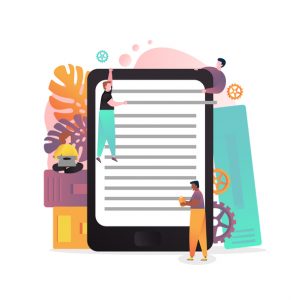C. Minimise Disruptions and Delays
Select the Right Tools For Your Communication Needs

Introduction
Key advancements in communication technology enabled remote work to flourish. It can be challenging to keep up with the latest innovations so people tend to stick with tools they are comfortable with rather than explore what is best for their current needs.
Just think of how many people use emails for almost everything despite knowing full well it can lead to misunderstandings. So, where to start and focus your limited time?
No single tool excels in every situation but master a few then most of your needs will be covered. If being less tech savvy and appearing incompetent worries you, know that you don’t have to become an expert to use technology well.
Modern tools are more intuitive and easier to use than ever.
To become more comfortable with communication technology, we’ll learn how to evaluate your communication needs and select the best tools available to you. When you understand the features and limitations of your tools, you can better improve your organizational remote communication processes.
Types of Communication: Synchronous and Asynchronous
When two or more people exchange information in real time, we call it: synchronous communication. In office-based work, most of your communication happens with face to face interactions which is the best form of synchronous communication. When working remotely, voice and video calls are your best alternative.

Face to face conversations

Voice and Video Calls
In contrast, asynchronous communication refers to an exchange of information without requiring the participants to respond at the same time. Snail mail and letters are among the oldest forms of asynchronous communication along with bulletins, reports, posters, and newsletters used at work. Nowadays, modern technology has given us: emails, SMS, instant messaging, forums, wikis, and project management tools.

Emails

Instant Messaging

Forums and Wikis
Some tools switch between asynchronous and synchronous depending on how you use it. Emails and instant messaging for example are inherently asynchronous but if people are reading the messages at the same time, it becomes synchronous.
Intuitively, we know that some conversations are best done face to face while others are better communicated in writing. The same principle applies to remote communication: you and your remote team must skillfully navigate between synchronous and asynchronous communication.
The distinction is useful for choosing the right tools based on specific communication needs. Be wary of preference for synchronous exchange: unscheduled meetings or instant messages can quickly become disruptive and hinder people from focusing on important work.
Understand Your Communication Needs

All communication tools can be evaluated based on a list of media capabilities which impact how a message is communicated and received. Media capabilities should not be mistaken for a tool’s set of features.
The six concepts below serve as a guide for understanding your communication needs. When you can identify the media capabilities required for achieving your goals, you will make better judgments on when and how communication tools should be used by your remote team.
1.Interactivity
Higher interactivity refers to communication mediums that allow messages to reach recipients as soon as they are sent. Messages can then be exchanged quickly, almost in real-time similar to a conversation. Most synchronous tools are interactive because they require participants to be present at the same time facilitating a rapid exchange of information.
Key Questions:
- How important is feedback to achieving shared understanding?
- How quickly do you want to get a response?
- Do you need a discussion or conversation to happen?
2. Richness
We communicate in different ways: gestures, facial expressions, and tone. In writing, we use various symbols such as words, tables, images, videos or even mathematical models to give meaning and improve understanding of a message. The features of a communication tool can directly impact access to a variety of information.
For example, voice calls do not benefit from facial expressions and gestures. A lack of variety in the type of information and the absence of non-verbal cues may negatively impact social perceptions between participants.
Key Questions:
- Will non-verbal cues and other information be important for shared understanding?
- Do you want emotion and intention to be clear?
- What’s the cost of misinterpreting your message?
3. Rehearsability
If you can edit your message before sending, a communication medium is said to be highly rehearsable. Senders can carefully craft a message with the intended meaning expressed as clearly as possible. It also gives them time to consider context and possible interpretations of their message. Most written communication tools such as chat are highly ‘editable’ such compared to video calls.
Key Questions:
- Do you need time to check your message before sending it?
- Is it important to be as clear and concise as possible?
4. Reprocessability
Messages have valuable information that are useful to access at a later time. A medium that enables a message to be reexamined or processed again within the context of a communication event or after the event has passed is said to be reprocessible.
Asynchronous communication tools have a high degree of reprocessability. If virtual meetings are recorded, then people, even those who were absent can revisit the messages at a later time.
Key Questions:
- Should people be able to access the information at a later time?
- Do we want the messages to be searchable?
5. Scope
When communicating we sometimes want to reach a bigger number of people without the requiring a specific place and time. Communication mediums with higher scope include emails, wikis, collaboration tools/apps.
Key Questions:
- How many people must be reached simultaneously without immediate response?
- Do you need people to be present or not when you send this message?
- Parallelism
6.Parallelism
A high degree of parallelism is achieved when multiple conversations can all be sent and received simultaneously like in meetings or group chats. But as more conversations emerge simultaneously, it becomes more difficult to keep up with the information especially in tools like a video call.
Key Questions:
- How many people do you want to participate simultaneously?
- Do people need to have simultaneous conversations?
